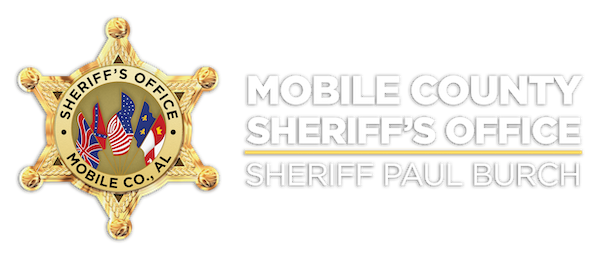Outreach & Education
Whether you’re an outdoor enthusiast wanting to know how to safely and legally operate an ATV, a resident of a neighborhood concerned about crime, or a representative of the media looking for information, we’re here to help.
Most importantly, we know you’re here to help. On behalf of the entire Mobile County Sheriff’s Office, thank you. We look forward to working with you to make this a safer place to live.
Active Shooter
This page describes what to do if you find yourself in an active shooting event, how to recognize signs of potential violence around you, and what to expect after an active shooting takes place. Remember during an active shooting to RUN. HIDE. FIGHT.
Be Informed
- Sign up for an active shooter training or request SECURITY EVALUATION, CALL 251-574- 1994 OR EMAIL training@mobileso.com
- If you see something, say something to an authority right away.
- Sign up to receive local emergency alerts and register your work and personal contact information with any work sponsored alert system.
- Be aware of your environment and any possible dangers.
Make a Plan
- Make a plan with your family, and ensure everyone knows what they would do, if confronted with an active shooter.
- Look for the two nearest exits anywhere you go, and have an escape path in mind & identify places you could hide.
- Understand the plans for individuals with disabilities or other access and functional needs.
During
RUN and escape, if possible.
- Getting away from the shooter or shooters is the top priority.
- Leave your belongings behind and get away.
- Help others escape, if possible, but evacuate regardless of whether others agree to follow.
- Warn and prevent individuals from entering an area where the active shooter may be.
- Call 911 when you are safe, and describe shooter, location, and weapons.
HIDE, if escape is not possible.
- Get out of the shooter’s view and stay very quiet.
- Silence all electronic devices and make sure they won’t vibrate.
- Lock and block doors, close blinds, and turn off lights.
- Don’t hide in groups- spread out along walls or hide separately to make it more difficult for the shooter.
- Try to communicate with police silently. Use text message or social media to tag your location, or put a sign in a window.
- Stay in place until law enforcement gives you the all clear.
- Your hiding place should be out of the shooter’s view and provide protection if shots are fired in your direction.
FIGHT as an absolute last resort.
- Commit to your actions and act as aggressively as possible against the shooter.
- Recruit others to ambush the shooter with makeshift weapons like chairs, fire extinguishers, scissors, books, etc.
- Be prepared to cause severe or lethal injury to the shooter.
- Throw items and improvise weapons to distract and disarm the shooter.
After
- Keep hands visible and empty.
- Know that law enforcement’s first task is to end the incident, and they may have to pass injured along the way.
- Officers may be armed with rifles, shotguns, and/or handguns and may use pepper spray or tear gas to control the situation.
- Officers will shout commands and may push individuals to the ground for their safety.
- Follow law enforcement instructions and evacuate in the direction they come from, unless otherwise instructed.
- Take care of yourself first, and then you may be able to help the wounded before first responders arrive.
- If the injured are in immediate danger, help get them to safety.
- While you wait for first responders to arrive, provide first aid. Apply direct pressure to wounded areas and use tourniquets if you have been trained to do so.
- Turn wounded people onto their sides if they are unconscious and keep them warm.
- Consider seeking professional help for you and your family to cope with the long-term effects of the trauma.
Citizen’s Basic Firearms Safety Class
The class covers safety, different types of handguns and the operating systems
The class covers safety, different types of handguns and the operating systems between the types of handguns, how they function, and what type of handgun may suit the citizen the best. The classroom will include instruction in firearm safety and the basics of handgun
marksmanship and fundamentals. In addition to these subjects, legal issues regarding the carry of a concealed weapons are also covered.
When the classroom portion is finished, students will have the opportunity to shoot their handguns on the range. Students will be under the supervision of Mobile County Sheriff’s Office Firearm Instructors, who will be available to coach, answer questions, and maintain a safe
environment during all phases of range shooting. Students may bring their own handguns, or borrow one from the range, and are
encouraged to tryout different types of handguns. Students attending the class are required to bring a minimum of 50 rounds of
ammunition for their handgun, or if borrowing a handgun from the range, 9mm, 40 Cal. S&W or .38 Special ammunition to use in these.
(FACTORY NEW AMMUNITION FOR CLASS-NO RELOADS)
The class is free; however, you must pre-register. Class size is Limited.
Contact Lt. David Robinson at dcrobinson@mobileso.com or 251-680-0471
CONTACT
Training Department
251-574-1994
